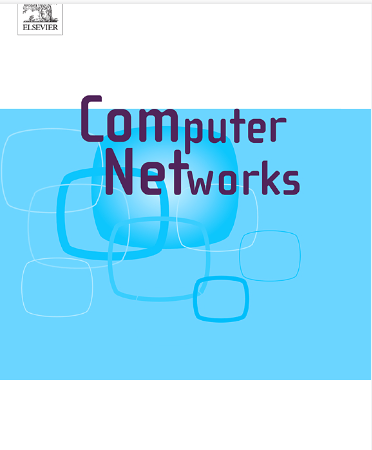MAID:利用时间点过程在移动物联网中进行移动感知信息传播
IF 4.4
2区 计算机科学
Q1 COMPUTER SCIENCE, HARDWARE & ARCHITECTURE
引用次数: 0
摘要
移动物联网(IoT)将移动通信技术与物联网相结合,连接各种物理设备(如传感器、智能设备、车辆、家电等)进行数据收集、处理和分发。然而,目前对移动物联网信息传播的研究忽略了设备移动性的随机性,导致对传播规模的预测不准确。为了解决这个问题,我们提出了一个移动感知信息传播模型(MAID),该模型使用时间点过程(TPP)来研究设备移动引入的随机动力学。首先,我们开发了一个基于tpp的模型来描述随机事件,如运动、链接、断开链接和信息传播。我们提出了一种机动感知强度预测方法来计算TPP框架内的事件强度。最后,在计算强度的基础上对信息传播规模进行预测,并建立事件驱动仿真系统,对移动物联网网络结构变化和信息传播进行建模。仿真结果表明,设备移动性加速了网络结构的变化,从而增加了信息传播的范围和规模。这种动态对传播效率有双边影响,取决于初始网络的稀疏度。在综合数据集上进行的大量实验表明,与四种基线方法相比,该方法的传播尺度预测精度提高了92%以上。本文章由计算机程序翻译,如有差异,请以英文原文为准。
MAID: Mobility-aware information dissemination in mobile IoT using temporal point processes
The mobile Internet of Things (IoT) integrates mobile communication technology with IoT to connect various physical devices (e.g., sensors, smart devices, vehicles, and home appliances) for data collection, processing, and distribution. However, current research on mobile IoT information dissemination overlooks the stochastic nature of device mobility, leading to inaccurate predictions of dissemination scale. To address this, we propose a mobility-aware information dissemination model (MAID) using the temporal point process (TPP) to investigate the stochastic dynamics introduced by device mobility. First, we develop a TPP-based model to describe random events, such as movement, linking, unlinking, and information dissemination. We propose a mobility-aware intensity prediction method to calculate event intensities within the TPP framework. Finally, we predict the scale of information dissemination on the basis of the calculated intensity and develop an event-driven simulation system to model network structure changes and information dissemination within the mobile IoT. The simulation results indicate that device mobility accelerates network structure changes, thereby increasing the scope and scale of information dissemination. This dynamic has a two-sided effect on dissemination efficiency, depending on the initial network sparsity. Extensive experiments on synthetic datasets show that our method improves the accuracy of dissemination scale prediction by over 92% compared to four baseline methods.
求助全文
通过发布文献求助,成功后即可免费获取论文全文。
去求助
来源期刊

Computer Networks
工程技术-电信学
CiteScore
10.80
自引率
3.60%
发文量
434
审稿时长
8.6 months
期刊介绍:
Computer Networks is an international, archival journal providing a publication vehicle for complete coverage of all topics of interest to those involved in the computer communications networking area. The audience includes researchers, managers and operators of networks as well as designers and implementors. The Editorial Board will consider any material for publication that is of interest to those groups.
 求助内容:
求助内容: 应助结果提醒方式:
应助结果提醒方式:


